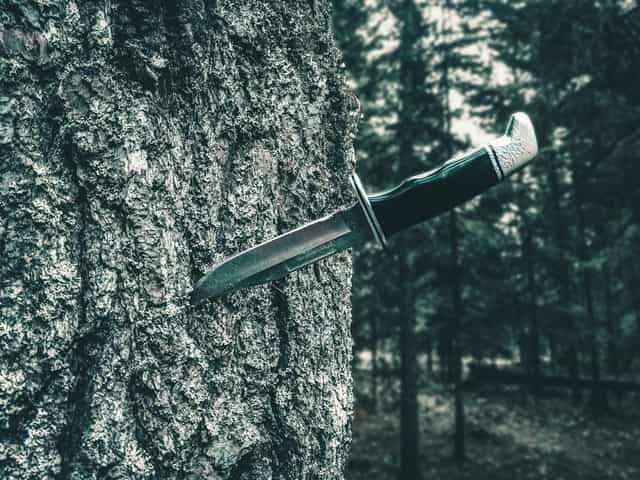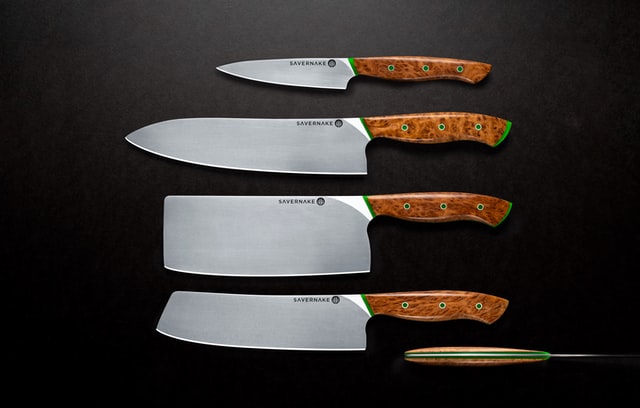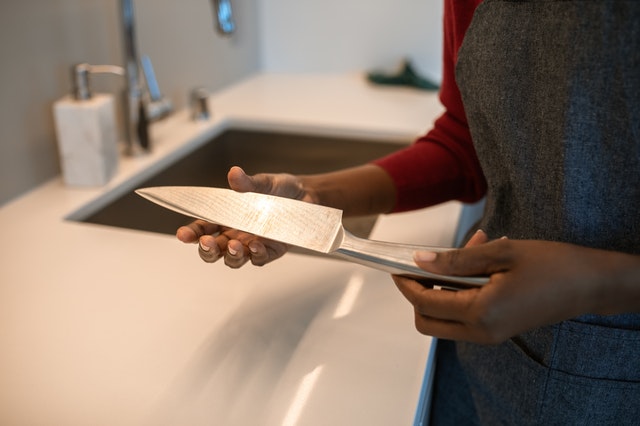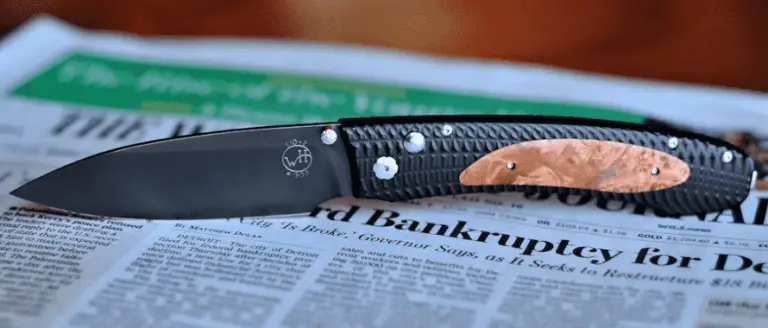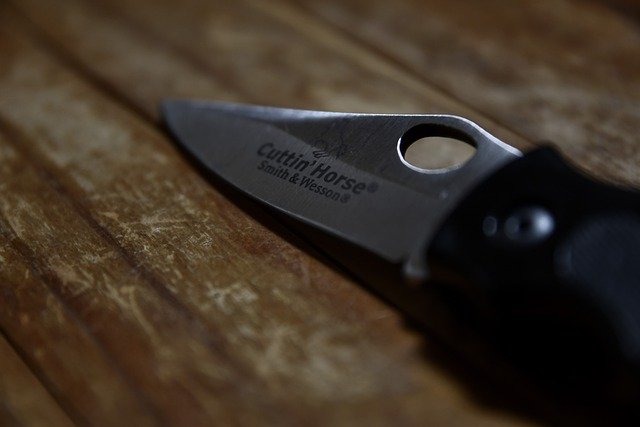You know that you need a knife in the kitchen, during your favorite BBQ sessions and maybe an EDC that will come in handy every day.
However, do you need a knife for hiking?
You don’t have to wait for that answer: yes, you do!
The next time you plan on going backpacking across the woods or just spending some time outdoors, read on to find out why you’d benefit largely from having a knife.
As a bonus, I have also included a guide on buying your hiking knife – and which ones I would recommend you take with you.
Table of Contents
Why You Should Take A Knife Hiking/ Backpacking with You
When packing your next outdoors gear, make sure you have considered these before leaving your knife out:
Safety
Let’s start with the most important one, which is safety.
I have discussed using knives for self-defense multiple times on this blog, and it comes in handy here also. If you haven’t seen those guides, check out:
- How to use a knife for self-defense; and
- Is it illegal to defend yourself with a knife?
While you don’t expect to meet any violent confrontations in your exciting time out in the woods, it is better to come prepared. There are a series of situations, whether against animal or human intruders, where a knife can be vital to your safety.
First Aid
There are a series of first aid situations where a knife would prove to be a practical tool.
Things that a knife could help with here include:
- Cutting bandages;
- Trimming moleskin;
- Cutting clothing fast enough;
- Treating certain wounds (such as blisters);
- Shaving wood to use as splinters; and more.
If there is anyone with medical experience on the trip, a good knife (well-sterilized) could also be used to make incisions and perform certain first aid procedures where necessary.
Opening Packages
Of course, you can do this by hand or with any other tool. When you have a good backpacking knife with you, though, you soon realize that they can speed up the process and make it easier for you.
The best part is that the knife doesn’t add more than a few ounces to your setup anyway, so there’s no fuss there.
Food Prep
You don’t have to bring a kitchen knife on a backpacking journey unless you were planning to set up shop there. With a small knife, you can process small games, cut up food items, and speed up your food prep process better.
If you have ever needed to prepare any kind of meal and you didn’t have a knife, you would understand how important these little tools can be.
PS For a longer hiking adventure, it would make sense to carry a set of kitchen knives with you. Look at this knife storage guide for some practical solutions to travel with your knife.
Cutting/ Handling Cords
Going hiking for multiple days also means dealing with a lot of cords. From bear bagging to rigging a tarp and setting up a clothesline, you need a considerable amount of cord.
What happens when the cords get into a knot and can only be cut off to save the situation?
Well, a good knife steps up to the plate and makes things easier for you.
Starting a fire
Starting a fire requires wood.
You can get wood when you’re out in the woods (hence the name, I suppose). Still, you need wood shavings to get the fire going, and you need the right kinds of wood also.
Fortunately, you can always shave wood for a small to medium size fire with your knife.
How Should You Carry Your Knife When Hiking?

There are a series of interesting options here.
I’m going to start with backpacks cos I have something extra to tell you on that one. Let’s get into it.
Backpacks
Putting your knife in your backpack, or a section of the backpack where the knife fits is a fine idea.
It allows you to take the extra weight off other parts of your body and the knife would be insignificant enough that you don’t notice the addition.
However, you could get separated from your backpack, which means you don’t have your knife anymore also. That is why this is the least preferred idea for me.
On your belt
Horizontal carry experts would love this one.
Since you’re hiking and won’t be sitting on any cushioned seats anytime soon, consider carrying your knife on your belt.
Horizontal carry, in this way, also gives you faster access to the knife. Just reach to your belt, pull the knife from the sheath and you’re good to go.
Around your neck
If you pass a lanyard through the knife, you could wear it around your neck also.
A neck knife is not so practical when you quickly have to take the knife out. After all, you can’t always yank it from your neck with one hand.
Most of the time, you’d have to take it off from around your neck like you were removing an ID card.
Waist Pouch
If the knife is portable enough, and you have a waist pouch, go for it.
Waist pouches might not be the most accessible also (since you have to open them first), but they are more accessible than options like the neck knife. Plus, there is a smaller chance that you get separated from your waist pouch.
On top of that, putting your knife in the waist pouch prevents discomfort when climbing.
Clipped
If you have a clip on the knife, clip it on the front pocket of your pants. You can also clip it on the belt or anywhere else that works for you.
Remember to move the clip position when you’re climbing, for example, to prevent the knife tip (sheathed, of course) from pressing into your thighs.
Choosing the Best Backpacking Knife for Yourself
There are a lot of hiking and backpacking knives, but they are not all good for you.
So, you need to know how to choose the best knives for yourself.
Instead of going into what these knives can do for you alone, I’ll border mostly on why they can do what they do. That way, you know what to look out for when buying your knives.
Let’s get to it then:
Fixed vs Folding Blade
If you’re a day hiker, there is a little chance that you’ll need to split wood, come into dangerous animal situations, process small game, and the likes. For you, a good folding blade knife should do the magic.
For hikers that go on trails for more than one day at a time, though, you’re limited with folding blade knives.
I have seen well-made folding blade knives but they still don’t offer the rigidity that you get from a good fixed blade. For you, choosing the fixed blade should be a no-brainer.
Verdict: Fixed Blade.
Single vs Multi-Tool Knife
On serious backpacking trips, you won’t need more than half of the parts of a multitool knife.
In these cases, you want your knife to do one thing: be a knife. Every other thing might just bog it down.
Since there are multiple tools in there, the knife would also likely not be as sharp and of premium quality as a dedicated knife.
Here, you can strike a balance by having a good swiss army knife handy, but don’t rely on that to be your daily driver. A single-purpose knife is your best bet.
Verdict: Single-blade knife
Short vs Long
The definitions of short and long here can vary, but I’ll use what most of us will take to be the standard.
A knife tending towards 6-7 inches and above is long, and one below that range is short.
That said, I would prefer a short utility knife when hiking.
There could be other knives (mostly kitchen knives anyway) in my backpack if I’ll be spending a lot of time on the trail, but my go-to knife won’t be up to 6 inches. Even 5 inches is enough for me in this case.
Besides the fact that the smaller knife is handier and easy to manage, it also doesn’t weigh as much.
So, whether I’m carrying it as a neck knife, as a horizontal carry on my holster, or tucked into my backpack somewhere, I’m good to go.
Purpose
As much as we can try, there is no such thing as a totally all-purpose knife.
True, some knives will work in a variety of situations, but they would still be beaten by another knife dedicated to such usage.
That said, you don’t have to buy multiple knives to go hiking with. This is where the purpose comes in.
Determine what you would most likely be doing on your hikes to inform the kind of knife you choose. This also factors in the environment where you go hiking.
Even though there will be other things you didn’t plan for that will require whipping out your knife, the primary purposes will help make an intelligent buying decision to start with.
Which Knife Should You Carry for Hiking?
My recommendations are the Esee knives.
No, I don’t mean all of them.
Some are either too small or too big to fit well in this case.
Here, consider which one does it best for you between the Esee 3 and Esee 4. I have done a comparison of both knives here for you to check out which would work best for you.
Both knives are sturdy, well-made EDC blades that will stand the test of time and work for almost anything that you throw at them. These are the kinds of knives you want to have your back anyway, so check them out.
FAQ Guide
Let’s discuss some frequently asked questions that you might also have around going hiking with a knife.
Is it illegal to go hiking with a knife?
The act in itself (hiking with a knife) is not illegal.
What might be illegal, though, is the kind of knife that you are carrying under the prevalent local, state, and federal knife laws.
For example, you might be charged with a felony if you are caught with a dagger or dirk, bowie knife, switchblades, or such other dangerous knives when hiking.
Even if you were with knives not in this category, something as simple as the length of the knives could put you in a bad spot with the law.
To avoid that, I recommend that you check these guides out:
- FAQ on Knife Carry Laws
- How law enforcement officers measure knife length
- How old is old enough to have a knife? – important for when you’re going hiking with kids
Should you carry a survival or utility knife?
Let’s face it:
Survival knives are functional and they are even sexier than utility knives.
When it comes to hiking, you need a multi-functional knife. So, without any doubt, I would go with utility knives anytime.
You can get so much more done with these kinds of knives and they can double as survival knives when you need them to.

